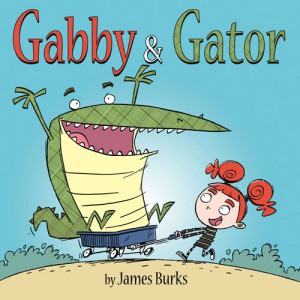Feed aggregator
FILIPINA NUDE
GAY VIDS
Do animals have spiritual experiences?
Upcoming furry comics for December 2010 (Previews only)
Physicists Discover Universal Wet-Dog Shake Rule
Should Animals Be Doing More For Animal Rights?
Friends from the Strangest of Places
James Burks has written and illustrated a new full-color graphic novel for young readers called Gabby & Gator. It’s available now, in hardcover, from Yen Press. “Gabby is a shy vegetarian whose hobbies include recycling, gardening, and playing the tuba. Gator is, well, an alligator whose pastimes include blogging and snacking on house-pets. Both feel lonely and misunderstood, she for having “uncool” interests, he for capitulating to his hunting instincts. When a bully steals Gabby’s hat and mocks her, Gator intercedes on her behalf, thus initiating a sweet, if improbable, friendship.” There’s a good, detailed review of Gabby & Gator at the School Library Journal.

image c. 2010 James Burks
SHANDA, KATMANDU, MORPHING PERIOD and retirement
8 Vote(s)
Disneys Sonny with a Chance with Pauly the Polar Bear
Cat vs Printer - The Translation
GIRLS SUCKING
AD 023 - The Stars are Wrong (part one) - We continue our offerings for October with another spooky story. This work of speculative fiction by Kevin Frane would be right at home on “The Twilight Zone.” It’s a two-parter with a nice slow build-up and bur
We continue our offerings for October with another spooky story. This work of speculative fiction by Kevin Frane would be right at home on “The Twilight Zone.” It’s a two-parter with a nice slow build-up and burn.
"The Stars are Wrong" by Kevin Frane
Read by Peter Katt
Music cues by Infinity Squared
“The Stars are Wrong” appeared in the fiction anthology Alone in the Dark. If you liked this story, you may be interested in that book.
AD 023 - The Stars are Wrong (part one) - We continue our offerings for October with another spooky story. This work of speculative fiction by Kevin Frane would be right at home on “The Twilight Zone.” It’s a two-parter with a nice slow build-up and burn. "The...
DVD DECRYPTER
BIKINI MODEL
What podcasts do you guys listen to?
Furries to Save World in Upcoming Anime
Funimation has released the trailer for the English release of one of 2009′s most critically acclaimed animes, Summer Wars. Hey all you people that think Digimon is the best shit ever: this is what that guy is doing now.
Yes, it looks like the exact plot of Digimon: The Movie, only with allusions to Second Life. Director Mamoru Hosoda was a bit ahead of his time with this concept back then.
One of the cooler things about the film is the lack of any big name celebrities in the cast. It’s all voice actors known for their work in video games and other anime.
Summer Wars hits theaters in December of this year, and gets a DVD release in Spring 2011.
Stu Bear in the 25th Century
Viper Comics has a notably unusual sort of graphic novel that’s available now. Here’s how they describe Stu Bear in the 25th Century: “A freak avalanche turns Stu Bear’s annual hibernation into a 500 year frozen sleep. Rediscovered and thawed, Stu finds evolved, hairless, intelligent bears, descendants of Stu’s brother, the new dominant species; living in floating cities above the Earth. But as a seemingly incurable plague threatens to destroy all life, Stu finds he’s the only one who can save the day.” The story was created by Jeff Bushell, who previously wrote the screenplay for the feature film Beverly Hills Chihuahua. The full-color art was created by Beware of the Art Studios. The Viper Comics web site includes a link to a YouTube video preview of this softcover book.